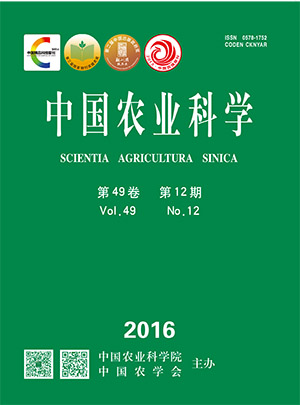-
Analysis of Root Absorption Characteristics and Nitrogen Utilization of Wheat Genotypes with Different N Efficiency
- XIONG Shu-ping, WU Ke-yuan, WANG Xiao-chun, ZHANG Jie, DU Pan, WU Yi-xin, MA Xin-ming
-
Scientia Agricultura Sinica. 2016, 49(12):
2267-2279.
doi:10.3864/j.issn.0578-1752.2016.12.003
-
 Abstract
(
862 )
Abstract
(
862 )
 HTML
(
10 )
HTML
(
10 )
 PDF (409KB)
(
1082
)
PDF (409KB)
(
1082
)
 Save
Save
-
References |
Related Articles |
Metrics
【Objective】This study was aimed at clarifying the physiological mechanisms of nitrogen uptake and utilization of wheat, and providing a theoretical basis for breeding and high-efficiency cultivation of wheat genotypes with high nitrogen efficiency, by analyzing the difference in root absorption characteristics and shoot nitrogen utilization of wheat genotypes with different nitrogen efficiencies. 【Method】 In this study, Nitrogen-efficient cultivars Zhoumai 27, Zhengmai 366 and Nitrogen-inefficient cultivars Zhoumai 28, Kaimai 20 were selected from 16 wheat genotypes in yield conditions. The relationship of root and shoot, root dry weight, root physiological activity, and the difference in nitrogen transport and distribution capability of root and shoot were researched under different nitrogen levels.【Result】The result showed that there were no significant differences in root characters of two types of wheat genotypes before jointing stage. After jointing stage, root dry weight, root to shoot ratio, root total absorption area and root active absorption area of Zhoumai 27, Zhengmai 366, and 28 were significantly higher than Kaimai 20. Root vigor of N-efficient genotypes was significantly higher than that of N-inefficient genotypes. The nitrogen accumulation amount at mature and nitrogen absorption amount after anthesis of Zhoumai 27, Zhengmai 366, and 28 were significantly higher than Kaimai 20. The grain yield, plant nitrogen use efficiency, nitrogen physiological efficiency, and nitrogen distribution ratio in grain of N-efficient genotypes Zhoumai 27, Zhengmai 366 were significantly higher than N-inefficient genotypes Zhoumai 28 and Kai Mai 20. The translocation amount to grain of N-efficient genotypes Zhoumai 27, Zhengmai 366 were significantly higher than those of N-inefficient genotypes Zhoumai 28, Kaimai 20, which vegetative organs accumulated nitrogen before anthesis. Compared with conventional nitrogen application rate, reduced supply nitrogen, root dry weight, root total absorption area, root active absorption area, root vigor, nitrogen accumulation amount at mature, nitrogen accumulation translocation to grain, and grain yield of the four wheat genotypes were decreased, when nitrogen application rate was reduced. At the same time, root to shoot ratio, nitrogen uptake efficiency, plant nitrogen use efficiency, and nitrogen physiological efficiency were increased when nitrogen application rate was reduced, root dry weight of four wheat genotypes, except for Zhoumai 28. At the same time, root total absorption area, root active absorption area, root vigor, nitrogen accumulation amount at mature, nitrogen accumulation translocation to grain, and grain yield of the four wheat genotypes were increased. And the root to shoot ratio, nitrogen uptake efficiency, plant nitrogen use efficiency, and nitrogen physiological efficiency were decreased.【Conclusion】The higher root biomass, root activity, root total absorption area, and root active absorption area of N-efficient wheat genotypes contributed to its absorption of nitrogen; it was the basis of nitrogen efficiency. The higher Nitrogen translocation, nitrogen grain distribution capacity, and reasonable shoot ratio of N-efficient wheat genotypes promotes its utilization of nitrogen, and it was the key for nitrogen efficiency. Although the N-inefficient wheat cultivar Zhoumai 28 had the strongest nitrogen absorption capacity, it had low transport capacity of nitrogen fertility and excessive shoot ratio after anthesis, which limited rational nitrogen utilization of wheat plant, which was not conducive to the improvement of nitrogen efficiency. The lower nitrogen efficiency of Kaimai 20 was due to its lower nitrogen absorption capacity.









